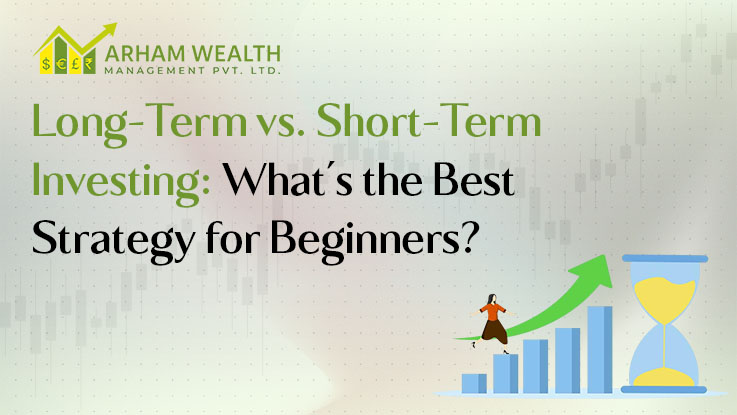


Investing is a journey that can be incredibly rewarding, but for beginners, it can also be overwhelming. With the vast array of options available, one of the most fundamental decisions you will face is choosing between long-term investing and short-term investing. Both approaches offer distinct benefits and come with their own set of risks. Understanding the difference between these two strategies is essential to aligning your investment choices with your financial goals.
In this blog post, we’ll dive deep into both long-term and short-term investing, exploring their pros and cons, how each strategy works, and which might be the best investment strategy for beginners.
Long-term investing typically involves holding investments for several years or even decades, with the primary goal of capital appreciation and wealth accumulation over time. The idea is to invest in assets that you believe will grow in value over the long haul, such as stocks, bonds, mutual funds, real estate, or retirement accounts like IRAs and 401(k)s.
The key to long-term investing is patience. By staying invested for a prolonged period, you allow your investments to weather market fluctuations and take advantage of compounding growth. Historical data shows that markets tend to grow over time despite short-term volatility.
Short-term investing typically involves holding investments for less than a year, sometimes even just weeks or months. The goal here is to capitalize on short-term price fluctuations or market trends. Short-term investments may include stocks, options, bonds, real estate flips, or other assets that are bought and sold quickly.
Short-term investing is often more hands-on and requires active monitoring of the markets. Traders might use technical analysis, which involves studying price patterns and trends, or they may follow news that could affect the market's direction. Short-term investing tends to be riskier because the market is much more volatile in the short run.
Now that we’ve covered the basics of both long-term investing and short-term investing, you might be wondering: which one should you choose? The answer largely depends on your financial goals, risk tolerance, time commitment, and the amount of capital you have available to invest. Let’s break it down.
Long-Term Goals: If you’re saving for retirement, your children’s education, or other long-term objectives, long-term investing is likely the better approach. These goals require patience, and long-term investments, like stocks and bonds, are more likely to grow over time.
Short-Term Goals: If you're aiming for a shorter-term objective, like saving for a vacation or a down payment on a house within the next few years, you might consider short-term investing. However, be mindful of the risks involved.
Low Risk: If you have a low risk tolerance and prefer to avoid large fluctuations in your portfolio, long-term investing might be more suitable. It allows you to ride out short-term volatility and reduce the impact of sudden market downturns.
High Risk: If you're comfortable with higher levels of risk and can tolerate market volatility, short-term investing could be a better fit. It offers the potential for higher returns but comes with the possibility of significant losses.
Limited Time: If you have limited time to dedicate to managing your investments, long-term investing might be the better choice. It’s a more passive strategy that requires less attention once you've made your initial investment.
Active Involvement: If you enjoy keeping up with the market and have time to monitor your investments regularly, short-term investing might appeal to you more.
Larger Capital: Long-term investing is often better for individuals who have more capital to invest. This is because, over time, small fluctuations in the market won’t have as large an impact on your portfolio as they would with a smaller amount of money.
Smaller Capital: Short-term investing can sometimes work well for beginners with smaller amounts of capital, especially if they are aiming for quick, small gains.
Whether long-term investing or short-term investing is the best strategy for beginners depends on your personal financial goals, risk tolerance, and level of involvement you wish to have. Long-term investing is generally less stressful and offers a more stable path to wealth, making it a great choice for most beginners. However, if you're looking for excitement and quicker results and are willing to take on more risk, short-term investing may appeal to you.
Remember, no matter which strategy you choose, education is key. Make sure you understand the investment types, risks, and tax implications involved before making any decisions. As your knowledge grows, you’ll be better equipped to make informed choices that align with your financial aspirations. Happy investing!